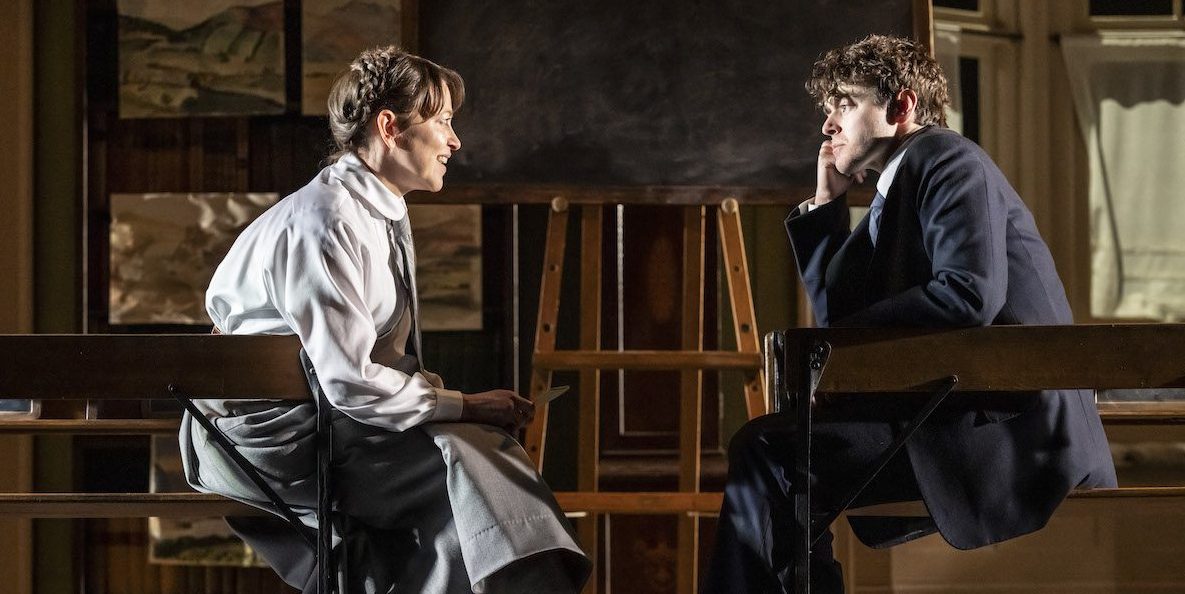Emlyn Williams is an unjustly neglected figure in the history of British theatre. As a writer and actor (on stage and screen) he made major contributions over a fifty-year career leaving a legacy of finely constructed plays and two volumes of memoirs that still stand out as among the most disarmingly frank, evocative and insightful of the genre. Just as remarkable was the trajectory of his life, which began in the poverty in North Wales, but by his 20s had taken him to Oxford and then onwards to the theatrical world and high society of London and New York.
How did this happen?
‘The Corn is Green’, first produced in 1938, provides a semi-autobiographical answer. The plot focuses on an inspirational teacher, Miss Moffat, modelled on Miss Sarah Grace Cooke, Williams’ own teacher and mentor. She founds a school in a depressed mining community, despite local opposition from Chapel and squire, and then nurtures the intelligence and raw literary talent of Morgan Evans, a chirpy and cheeky teenager fizzing with natural talent. Against the odds he wins a scholarship to Oxford, and a passport to the world, though at several points it seems very unlikely to happen.
Like many ‘well-made’ plays of the era, there are elements that are now unfashionable and hard to bring off for today’s audiences; but it still stands as one of the finest dramatic representations of the power of education to transform lives and lift horizons, while also emphasising the perils and dangers of teachers trying to live their own lives through their pupils. And the lead role of Miss Moffat is a truly wonderful part that has attracted fine performances from Sybil Thorndike, Betty Davis, and Katherine Hepburn among others. With skilful actors, and careful curation, a memorable production is still very possible.
Unfortunately, a whole series of interventions by the director undermines the success of the whole. The first half of the evening is dominated by a narrator figure, based on Williams himself, who speaks the stage directions in and around the action. While you can see why you might want to re-package the text as a memory play, and rebuild Williams’ own reputation at the same time, this device slows down the action frustratingly and commits the cardinal sin of ‘telling’ the story before you have allowed the actors to ‘show’ it. The second half is allowed to proceed with fewer interruptions so that the actors can get into their stride, except for one egregious episode where melodrama is replayed as comedy. If the director has such radical doubts about the original text, you do begin to wonder why it was selected for performance.
What saves the evening is a stellar performance by Nicola Walker as Miss Moffat. Walker is capable of turning the mood of the scene by a single gesture or inflection. She has the gusto and bravura to impersonate inspiration in the classroom, while also reaching down deep for vulnerability and fragility as needed. She has a very able partner in Iwan Davies as her star student. This is also an exceptional performance for someone just out of drama school, who visibly grows in maturity and personality as the play progresses. His conflicted responses to the hot-house training he undergoes are graphically illustrated, and the later scenes in which he confronts his teacher and mentor are a well-matched joust.
The supporting cast respond in a variety of ways to their roles. As you would expect from drama of this era, many of these characters are stock, even caricature parts, and were so even in the 1930s. They have functions to perform in the plot and a range of stereotypes from Welsh life of the era to project. The actors who fare best are those with excellent comic timing who take advantage of the one-liners they are given and add comic stage business of their own. Jo McInnes, Alice Orr-Ewing, and Rufus Wright all do so. It would be churlish also not applaud the work of Gareth David-Lloyd as Emlyn Williams, which despite the remarks above, stands as a fine impersonation of the man himself.
The creative team as usual set a very plausible context for the play, especially in the second half where the set by Ultz gives just the right amount of period detail while allowing plenty of room for manoeuvre for what can be, at times, a crowded stage. Costumes too are impeccable for the time and place.
While the directorial interventions imposed on this play require this reviewer to enter a negative response overall, there is one innovation which really does deserve applause and indeed imitation in further revivals. Dominic Cooke introduces a chorus of miners, present and often singing throughout the action in a way that subtly underscores the mood of particular scenes. In this kind of device, which establishes the biographical origins of this play with a subtlety that is absent elsewhere, we certainly do see ways in which this play can be legitimately updated and enhanced without undermining its central dynamics.

